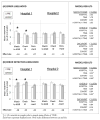That's nice, but what does IT do? Evaluating the impact of bar coded medication administration by measuring changes in the process of care
- PMID: 21686318
- PMCID: PMC3113497
- DOI: 10.1016/j.ergon.2011.02.007
That's nice, but what does IT do? Evaluating the impact of bar coded medication administration by measuring changes in the process of care
Abstract
Health information technology (IT) is widely endorsed as a way to improve key health care outcomes, particularly patient safety. Applying a human factors approach, this paper models more explicitly how health IT might improve or worsen outcomes. The human factors model specifies that health IT transforms the work system, which transforms the process of care, which in turn transforms the outcome of care. This study reports on transformations of the medication administration process that resulted from the implementation of one type of IT: bar coded medication administration (BCMA). Registered nurses at two large pediatric hospitals in the US participated in a survey administered before and after one of the hospitals implemented BCMA. Nurses' perceptions of the administration process changed at the hospital that implemented BCMA, whereas perceptions of nurses at the control hospital did not. BCMA appeared to improve the safety of the processes of matching medications to the medication administration record and checking patient identification. The accuracy, usefulness, and consistency of checking patient identification improved as well. In contrast, nurses' perceptions of the usefulness, time efficiency, and ease of the documentation process decreased post-BCMA. Discussion of survey findings is supplemented by observations and interviews at the hospital that implemented BCMA. By considering the way that IT transforms the work system and the work process a practitioner can better predict the kind of outcomes that the IT might produce. More importantly, the practitioner can achieve or prevent outcomes of interest by using design and redesign aimed at controlling work system and process transformations.
Figures





References
-
- Bates DW, Gawande AA. Patient safety: Improving safety with information technology. N Engl J Med. 2003;348:2526–34. - PubMed
-
- Holden RJ, Scanlon MC, Brown RL, Karsh B. What is IT? New conceptualizations and measures of pediatric nurses’ acceptance of bar-coded medication administration information technology. Annual Meeting of the Human Factors and Ergonomics Society. 2008;52:768–72.
-
- Woods DD, Dekker SWA. Anticipating the effects of technological change: A new era of dynamics for human factors. Theor Issues Ergon Sci. 2000;1:272–82.
Grants and funding
LinkOut - more resources
Full Text Sources
Research Materials
